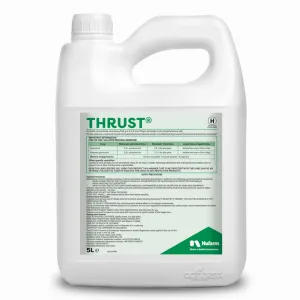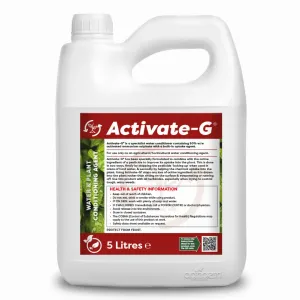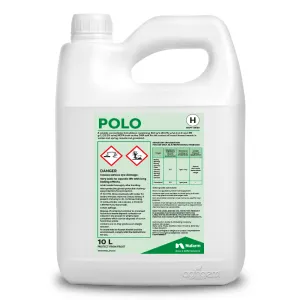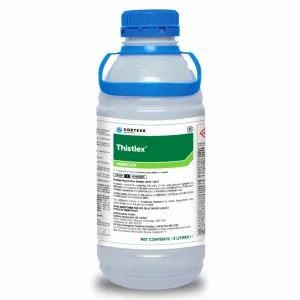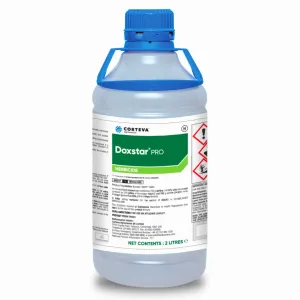Thistle Varieties
The two most common thistle varieties likely to be found in a paddock include creeping thistle and spear thistle.

Spear thistle (above) is a biennial thistle with dark green rosettes that appear in early spring. It has bright pink florets, and long, pinnately lobed spear-like pointed leaves, hence the name.
Spear thistles spread via seed distribution - either via wind, in baled hay, or as a contaminant in other plants including cereal.
Each plant can grow up to 1m in diameter before flowering, competing with grass for space, light and nutrients, and taking up a lot of valuable space in pasture.

Creeping thistle pictured above is one of the most common thistle weeds found in fields and paddocks.
One of the reasons creeping thistle is so difficult to eradicate is because it spreads via extensive root systems. These combined with wind-blown seed means it can get a hold in paddocks very easily.
Creeping thistle has flower heads with lilac pink flowers that appear above a small spiny cylinder shape bulb. It has divided, spiny leaves and like most thistles, produces thousands of fluffy wind-borne seeds in late summer.
Creeping thistle is a biennial with leaves that grow up to 20cm long, but the entire plant can grow up to 1.5m tall. Each stem has up to five flower heads.
Treatment
ThistleX Creeping & Spear Thistle Weed Killer For Grassland
Further reading
Docks

A very common native perennial weed, the dock leaf, or dock plant, is a deep-rooted large-leaved plant.
There are two varieties – broad-leaved dock and curled dock. Both produce leaves up to 30cm long with the curled variety producing leaves with wavy edges. Stems are upright and branched and often reddish in colour.
A tough stem produces clusters of flowers, changing from green to red over the summer and with red brown coloured papery seeds that often stay on the plant through winter. A single plant can produce 60,000 seeds – viable for up to 80 years.
Docks can compete with pasture grass for nutrients and can reduce the quality and yield of forage crops.
Treatment
Doxstar Pro Tough Dock Weed Killer
Further Reading
Plantain

There are several varieties of plantain. Pictured here is the flower of ribwort plantain – one of the most common to be found in paddocks. Other common varieties include broadleaf or greater plantain and blackseed plantain.
The flowers of ribwort plantain grow on thin wiry stems which sprout from a rosette of dark green spear-shaped leaves. The flowers have protruding white stamens which gradually turn brown.

Greater plantain pictured above has broader oval leaves which form a rosette close to the ground. It produces yellow green flower spikes up to 15cm long with small flowers densely packed together which go on to form green seeds.
Treatment
Thrust Selective Weed Killer
Soft Rush
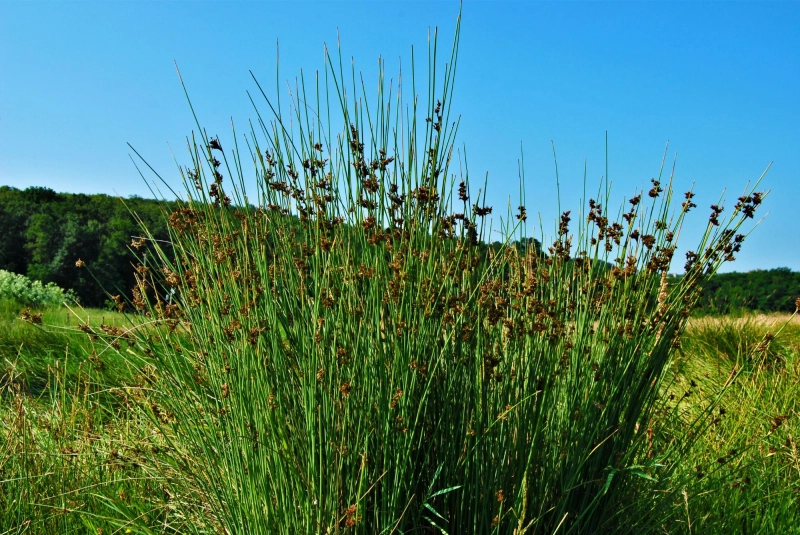
Soft Rush is often found growing in permanent pasture/grazing areas which have poorly drained soils in high rainfall areas.
The plant is easy to identify growing to 1.5m high and with smooth, tall green stems without leaves. It produces pale brown flowers in loose rounded clusters.
Soft Rush plants are not very palatable or digestible to livestock compared to grass and provide very little nutritional value. If the area is being used for hay and silage production, then it can impact this as rush is not easily compacted - leaving air pockets in the bales for listeria mould to develop.
Treatment
Polo Strong Selective Paddock Herbicide
Further Reading
Creeping Buttercup
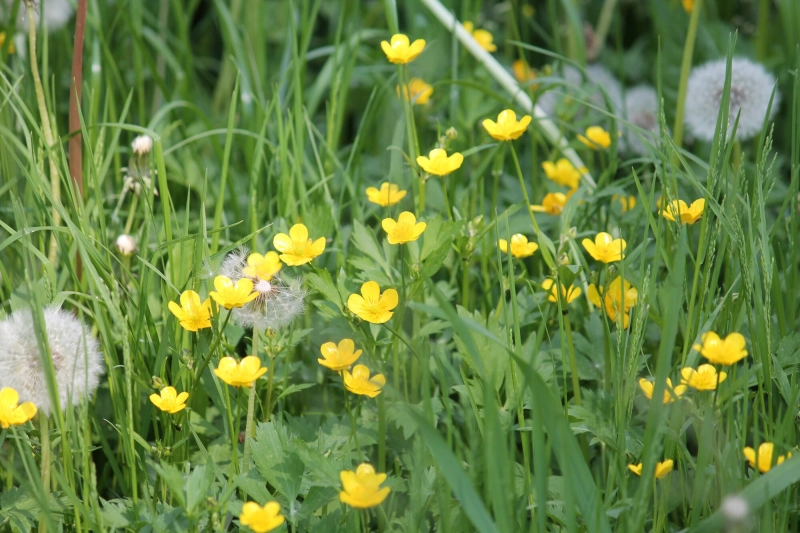
Creeping Buttercup is a very common weed, identifiable from other buttercup species by the way it spreads laterally with strong rooting runners.
It has glossy yellow flowers that grow to around 2cm across with serrated hairy leaves divided into three lobes.
Creeping buttercup produces dense clumps of deep pale roots. It favours damp places under trees and in shaded areas of the field but will spread in many different conditions and habitats.
Treatment
Further Reading
Problem Guide - Creeping Buttercup
Ragwort

Ragwort is an invasive species of weed and is toxic to horses. It is a tall plant growing to around 1.5m.
Its leaves are pinnate, lobed and wrinkly and each grows from a rosette up to 30cm long. Crushing the leaves can produce an unpleasant smell.
It is highly recognisable by its flowers – producing dense clusters of yellow daisy-like flowers from June to November.
Treatment
Further Reading
Nettles

One of the most common weeds in the UK, nettles are well known for their sting as much as their rapid clumping growth.
There are several species, the most commonly found ones including stinging nettle and dead nettle. Stinging nettles have hairy stems, with drooping catkin flowers and oval toothed leaves.
Dead nettle has heart shaped toothed leaves and reddish square stems with whorls of pinky red hooded flowers on the stem.
Treatment
Thrust Selective Weed Killer |
Further Reading
Bramble

Despite its ability to provide us with autumn blackberry fruits, the bramble is a problematic weed not least for its incredible rate of growth and long, thorny tangling shoots.
Brambles have jagged-edged leaves with five to seven oval leaflets. Flowers can be white or pink with fruits that mature from green through to red and finally dark purple and black.
Treatment
Please contact our team for product advice
Further Reading
Burdock


Burdock is known for its sticky hooked seed heads that attach themselves to clothing or dog fur as you walk through affected fields – helping the plant to disperse its seeds widely.
Greater burdock has very large heart shaped leaves that grow close to the ground and produces thistle-like flower heads that turn into the sticky burs most of us are familiar with.
A central flower stalk can grow up to 6 feet tall.
Treatment
Thrust together with Activate G
Sycamore
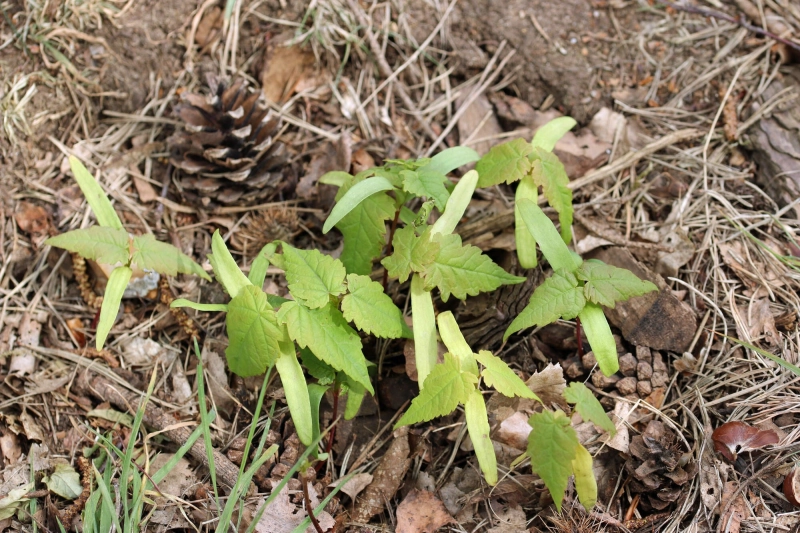
Sycamore seedlings can be blown over from nearby trees or neighbouring fields and are particularly problematic for paddock managers as they are toxic to horses.
Early seedlings can be identified as a pairing of long slim leaves each growing to around four centimetres, before the more familiar sycamore shaped leaves then sprout from the centre.
Signs of sycamore poisoning (known as Atypical myopathy) can include muscular weakness and stiffness, dark urine, colic-like signs, sweating and trembling. Horses diagnosed early by blood and urine tests can be treated with intravenous fluids and intensive care, but once the signs are present it is already very serious.
Treatment
Please contact our team for product advice.
Further Reading




